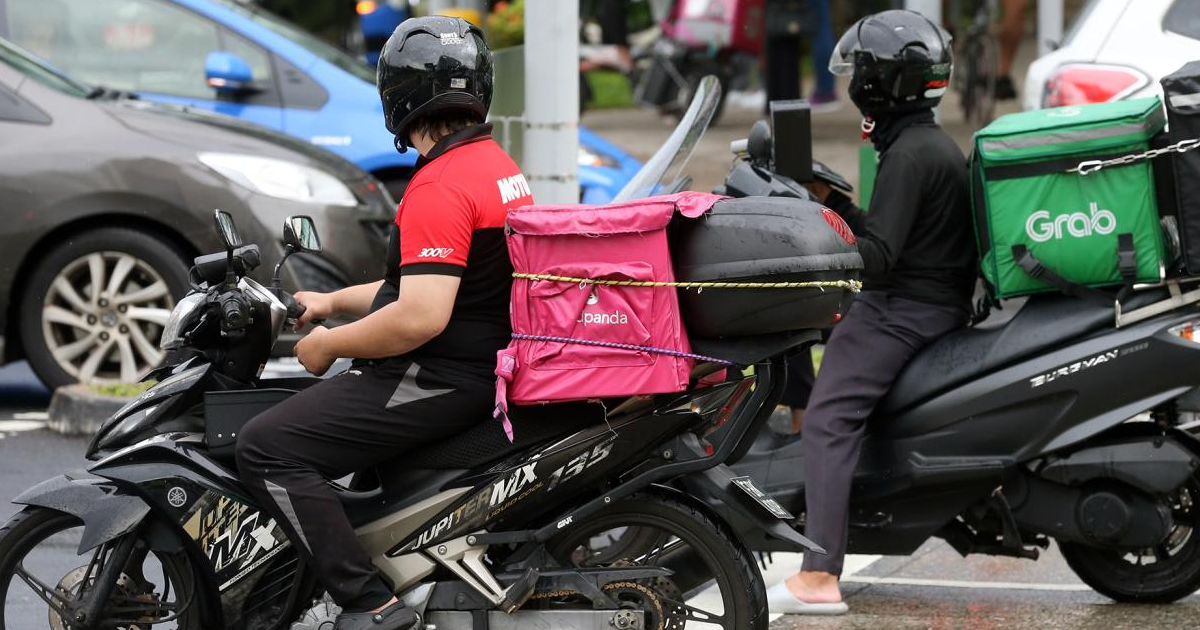TL;DR – The National Delivery Champions Association commissioned a survey to gain insights into the concerns and pain points of food delivery riders. The top 3 concerns that came up? Income stability, lack of CPF, job stability.
Remember 7 April 2020? That fateful day when the Circuit Breaker came into effect. Restaurants, hawker centres, coffeeshops and bubble tea outlets were strictly limited to deliveries and takeaways. Many of us turned to food delivery so we could enjoy our little luxuries, the number of food delivery riders also exploded. But while food deliveries have since become a big part of our lifestyles, it appears that our delivery riders have not been reaping the benefits…
Recently, the National Delivery Champions Association (NDCA) commissioned a survey to gain insights into the concerns and pain points of food delivery riders. The top 3 concerns that came up?
Income stability, lack of CPF, job stability.

Platform workers are subjected to a high degree of control by platform companies.
Because platform workers are not classified as employees, the association does not have the same legislative prowess as trade unions.
NCDA has been calling for more robust legislative backing to better represent platform workers, who “are subjected to a high degree of control by platform companies.” In fact, 79% of the 302 respondents said they wish for a ‘union group’ to represent their interests, support them in negotiating fair contract terms and resolve order issues with platforms. Since its set up, NDCA has been advocating for three focus areas that affect delivery riders and need urgent attention:
- Work terms and conditions
- Better working conditions
- Medical and injury coverage
NDCA Advisor Yeo Wan Ling also said that the pandemic has highlighted the essential role of delivery workers play and the challenges they face. She shared that now more than ever, there is an “urgent need to represent them”, the main reason why the NDCA has been calling for stronger legislative backing.
NDCA has been working closely with platform operators to ensure fair earnings for delivery workers by reviewing commission structures and making incentive structures more transparent. A good start!
Top 6 Everyday Risks That Food Delivery Riders Can Relate To
Medical and injury coverage for delivery riders
Another issue of concern is that platform workers who have made an insurance claim with platform companies’ personal accident plan often find the coverage insufficient. Many are actually willing to top up in return for better coverage!
Faced with the daily rush to meet food delivery orders, they often risk meeting with accidents on the roads. In fact, almost every rider we spoke to has either met with an accident on the job or knows someone who had suffered an injury while rushing to meet orders.
Just last week, a 45-year-old food delivery rider died after an accident involving a lorry in Buangkok.
In June, a 54-year-old food delivery rider died in a traffic accident while riding an electric bicycle near Waterway Point shopping mall in Punggol.
In April, food delivery rider Jason Tan died after he was involved in an accident in Gambas Avenue. The 24-year-old, whose wife was expecting then, had been out fulfilling orders.
There are way more cases.
Despite being prone to accidents in wet weather and busy traffic conditions, food delivery riders are vulnerable as they cannot claim for work injuries under the Work Injury Compensation Act (WICA). One life lost is one too many.
These workers have been helping to keep Singapore moving during the peak of the pandemic, and their numbers are growing. The least we can do, then, is to afford them the rights and benefits that they very much deserve. NTUC is working through the Advisory Committee on Platform Workers and wants to hear workers’ views on enhancing representation, retirement and housing adequacy and greater protection against workplace injury. Find out more here.
